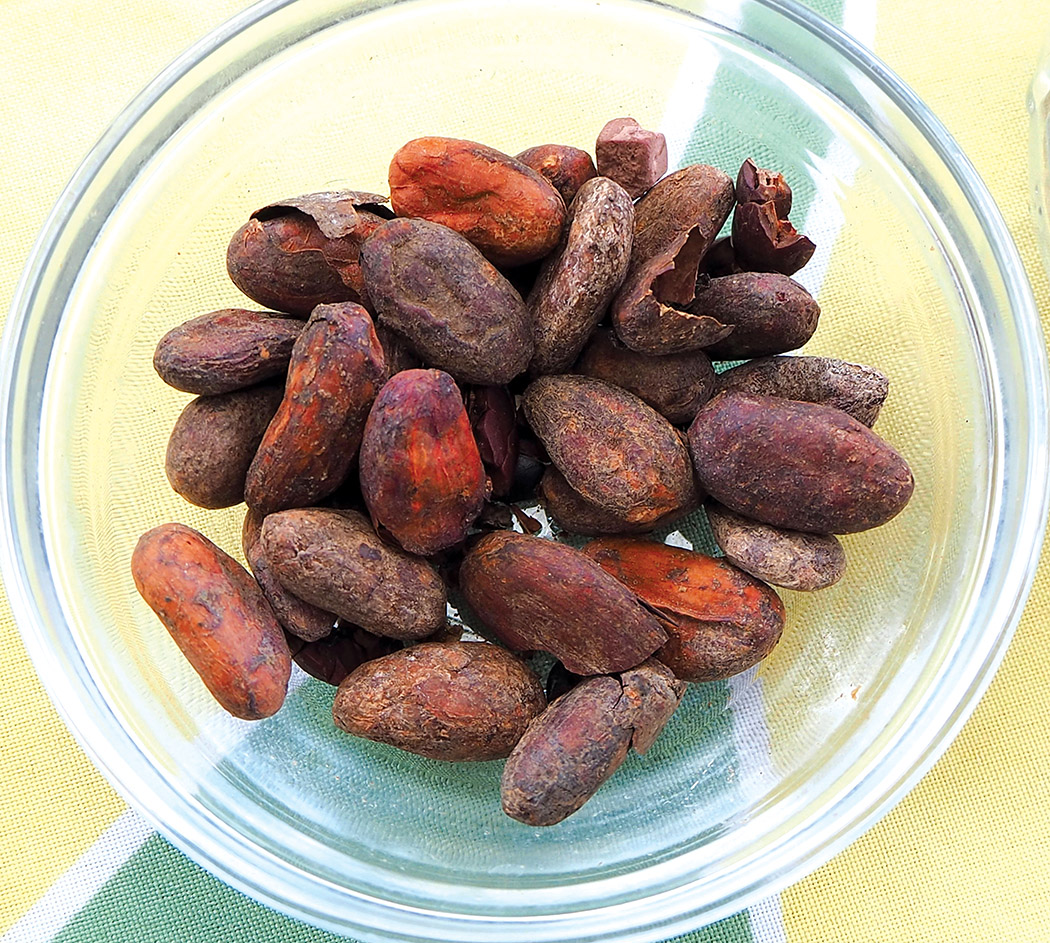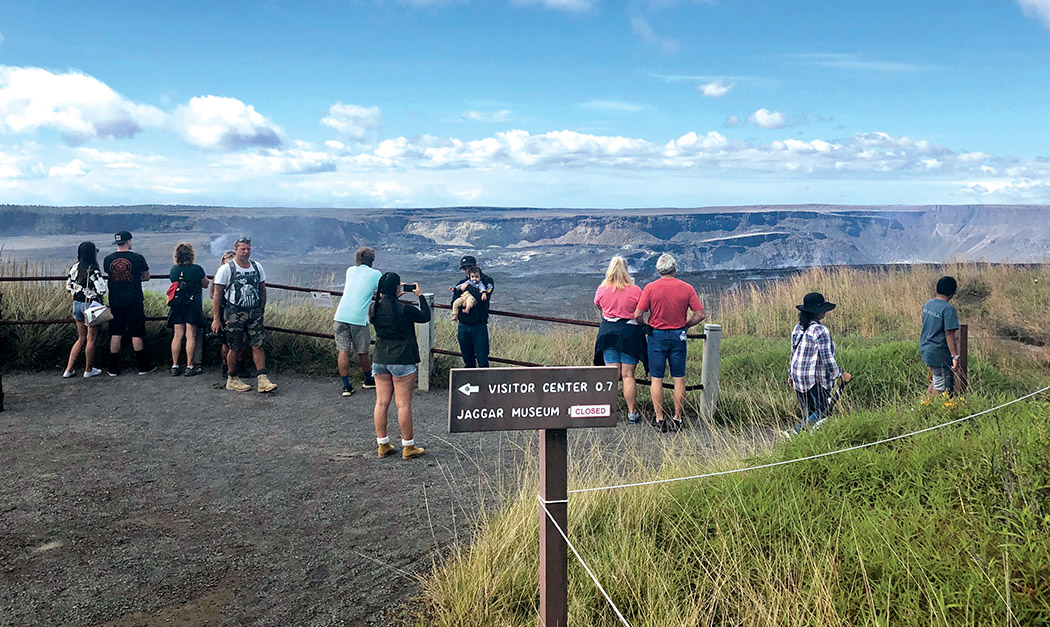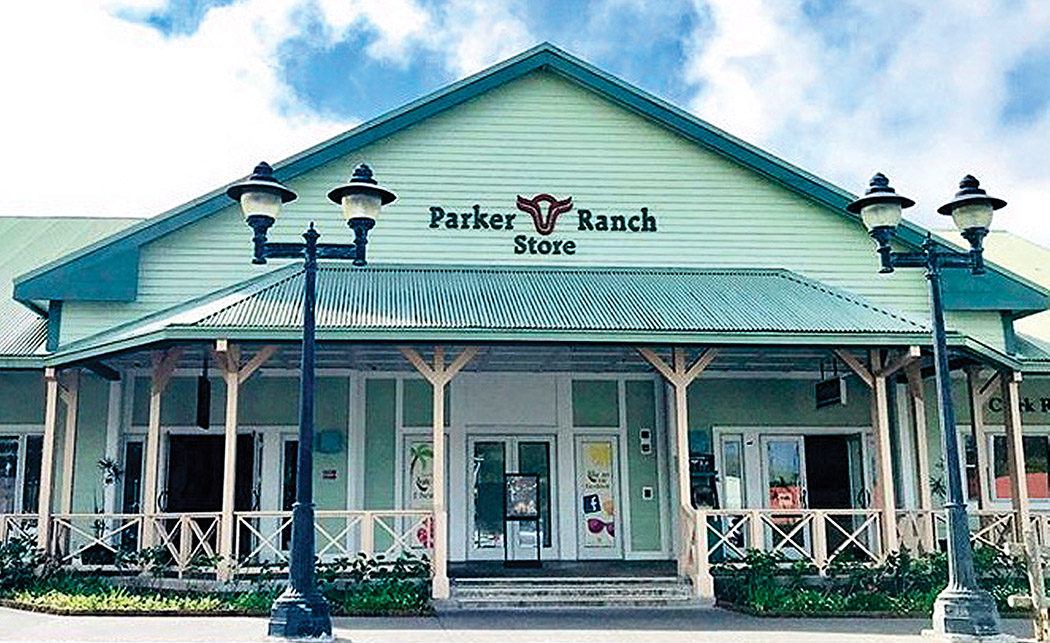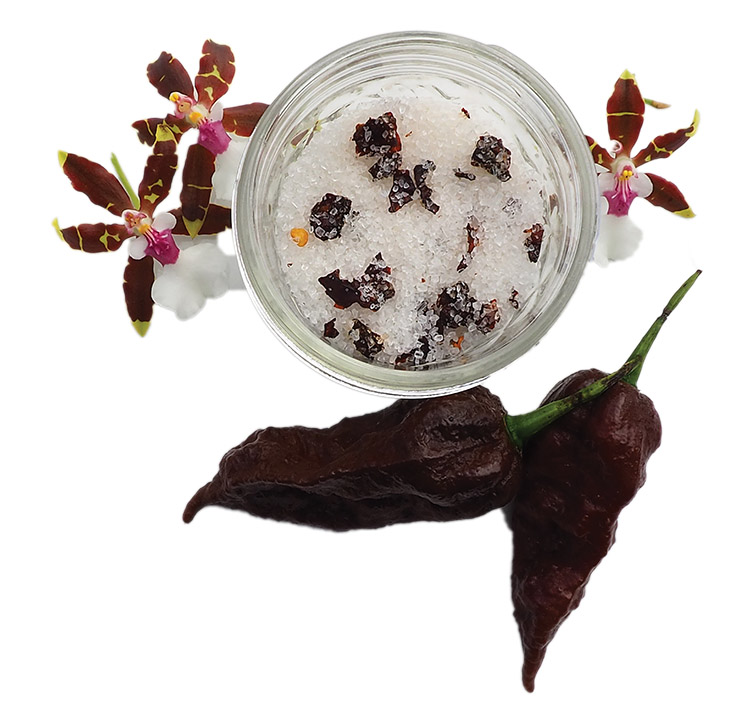
Local Foods: Naughty and Nice–The Chocolate Ghost Pepper
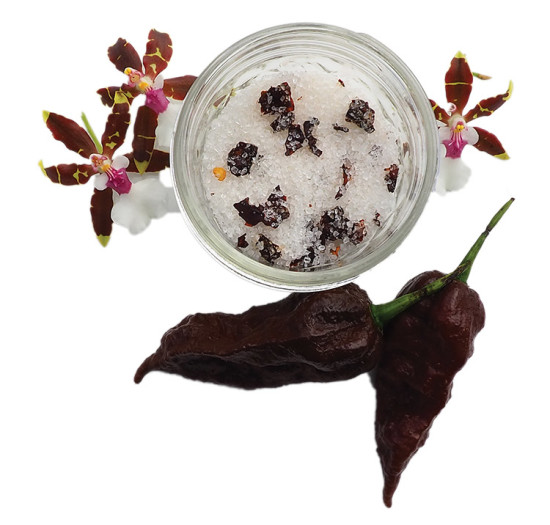 By Brittany P. Anderson
By Brittany P. Anderson
“I just don’t know what to do with these hot peppers,” my friend Barbara said to me, “They’re beautiful, but they are just so hot.” Barbara has a thriving chocolate ghost pepper plant in her bountiful Hilo-town garden. “Drop them off, and I’ll see what I can do,” I promise as Barbara leaves with a laugh. I had no way of preparing for the heat I was in for.
About a week later, on my doorstep was an egg carton and in each egg cradle was a gorgeous chocolate ghost pepper. The skin is chocolate mahogany red with a blistered pattern characteristic of the ghost pepper family. The mid-sized hot peppers look so delicate, sweetly concealing the intense heat they are waiting to deliver.
The heat level of hot peppers is measured in Scoville Heat Units (SHU). Our beloved Hawaiian chiles weigh in at 50,000 to 70,000 SHU while the chocolate ghost pepper averages at 1,000,000 SHU. That’s one hot chile! Also known as Bhut jolokia or ghost chile, it is native to Northeastern India.
Ghost peppers grow best in hot and high humidity locations. Their seeds need 80-degree soil even to germinate. Barbara has raised beds in her backyard which is ideal for ghost pepper planting as they help to maintain higher soil temperature.
Out of sheer curiosity, I nibbled on the end of the chocolate ghost pepper—the taste was brilliant like sweet pepper and then the heat gradually built to an impressive intensity bringing tears to my eyes and radiating throughout my mouth.
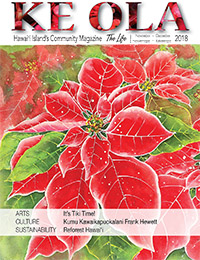
Capsaicin is the compound that gives hot peppers their heat. It is a kind of evolutionary armor to prevent mammals from eating peppers because the seeds are not viable after going through the digestive tract. When mammals, like you and me, eat a hot chile pepper, capsaicin stimulates our pain receptors linked to burning sensations and not a result of real heat. Birds, however, are not affected by capsaicin and are the perfect seed distribution system.
Most hot peppers only store capsaicin around their seeds, but not ghost peppers. These pack high levels of capsaicin throughout the fruit and seeds. Usually, omitting hot pepper seeds from a recipe will reduce the heat; however, it makes no difference with chocolate ghost peppers.
The attractive peppers should be handled with gloves for your protection. The fire packed within just one of the chocolate ghost peppers is enough to irritate eyes and create a lingering burning sensation on the hands—which can be transmitted elsewhere on the body if the peppers are handled unprotected and without caution.
My challenge was to find a way to redistribute the heat while preserving the sweet floral taste of the variety. Creating this recipe for chocolate ghost pepper salt has been an intense labor of love. For starters, I did not take my own safety advice and forgot to wear gloves when handling the peppers. For two days my hands throbbed with heat.
The end result of this recipe is a salt that delivers a subtle warmth perfect for finishing salads, rubs and brines, or rimming a margarita glass. This can easily be adapted for any number of hot peppers for a variety of flavors and desired heat level.
 Chocolate Ghost Pepper Salt
Chocolate Ghost Pepper Salt
5 chocolate ghost peppers
2 cups high-quality Hawaiian sea salt
Method
First, put on gloves before handling peppers. Wash and dry peppers then cut in half, removing the green top and stem. Arrange on a parchment-lined cookie sheet. Place in 200F oven, or your lowest available setting, for 1–2 hours until dry but not burnt. Coarsely grind dried peppers in spice mill or food processor. In a layering fashion, pour dried pepper and salt into a glass jar that has a lid (I used a canning jar) then secure the top. Gently shake to distribute the pepper more evenly throughout the salt. Let the jar sit for at least 5 days, lightly shaking each day to disperse peppers throughout salt. Keep in a dry location and enjoy!
